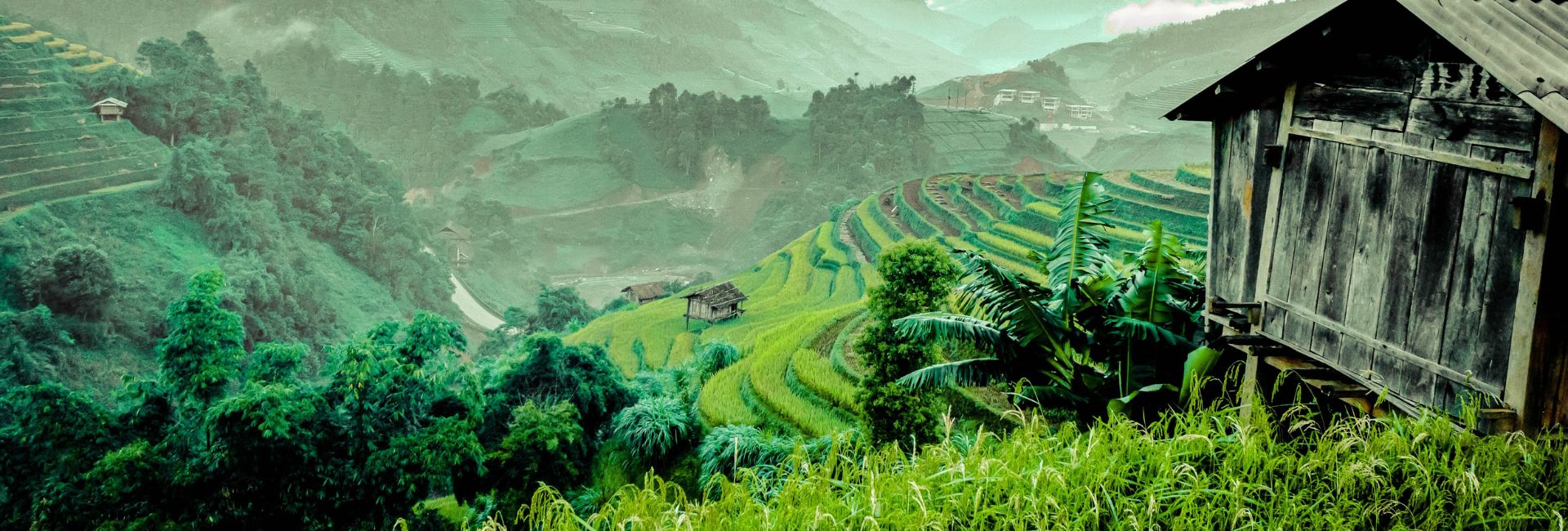If you’re planning a trip to Sapa, it’s important to plan it carefully to make the most out of your experience. One thing you should keep in mind is the timing of your visit, as it can greatly affect your trip. Depending on the month, you may miss out on the breathtaking rice fields, encounter heavy rainfall, or experience extremely cold weather. To avoid any surprises, it’s a good idea to do a bit of research on the weather conditions to choose the best time to visit Sapa before your trip. This way, you’ll be able to pack appropriate clothing and know what to expect, making your trip all the more enjoyable!
Perfect Time for Your Sapa Adventure
From September to November and from March to May are considered as the best time to visit Sapa. During these times, the weather is pretty steady with sunny days and cool weather at nights. At the fall time of the year, the weather is dry, clear with much sunshine making it very suitable for tourism activities.
Between September and October is the time when the view of the terraces of Sapa is at its best. The cool and dry climate together with the unchangeable temperature makes it the most suitable time for going trekking and taking nice photos.
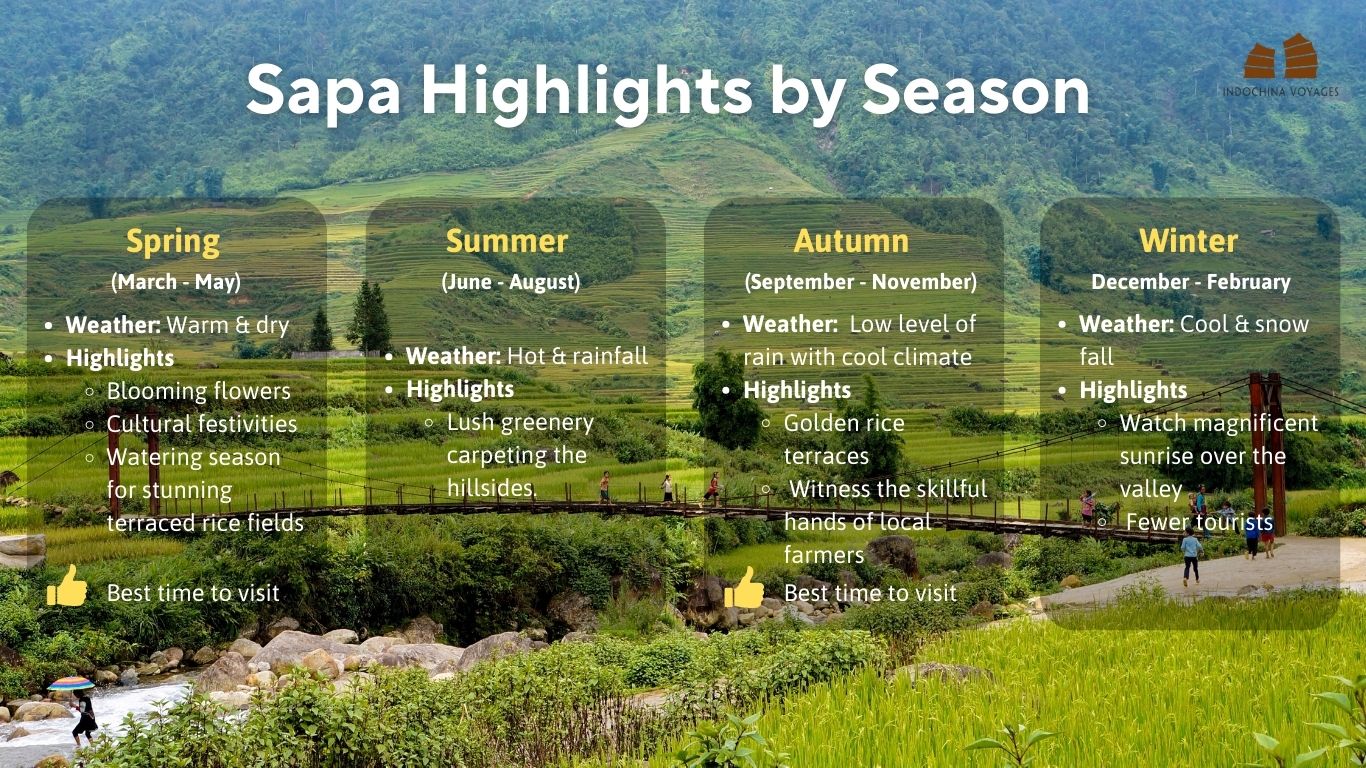
Sapa in Spring – Blossoms and Watering Season
If you visit Sapa in the months from March to May, you will certainly get a stunning chance to admire the spectacular landscapes of many vibrant flowers and evergreen and huge fields. Cherry blossoms, peach flowers, and plum blossoms burst into bloom, blanketing the hillsides in a riot of colors. Sapa in March is particularly enchanting, as the cherry blossoms start to bloom, creating a picturesque backdrop for your adventures.
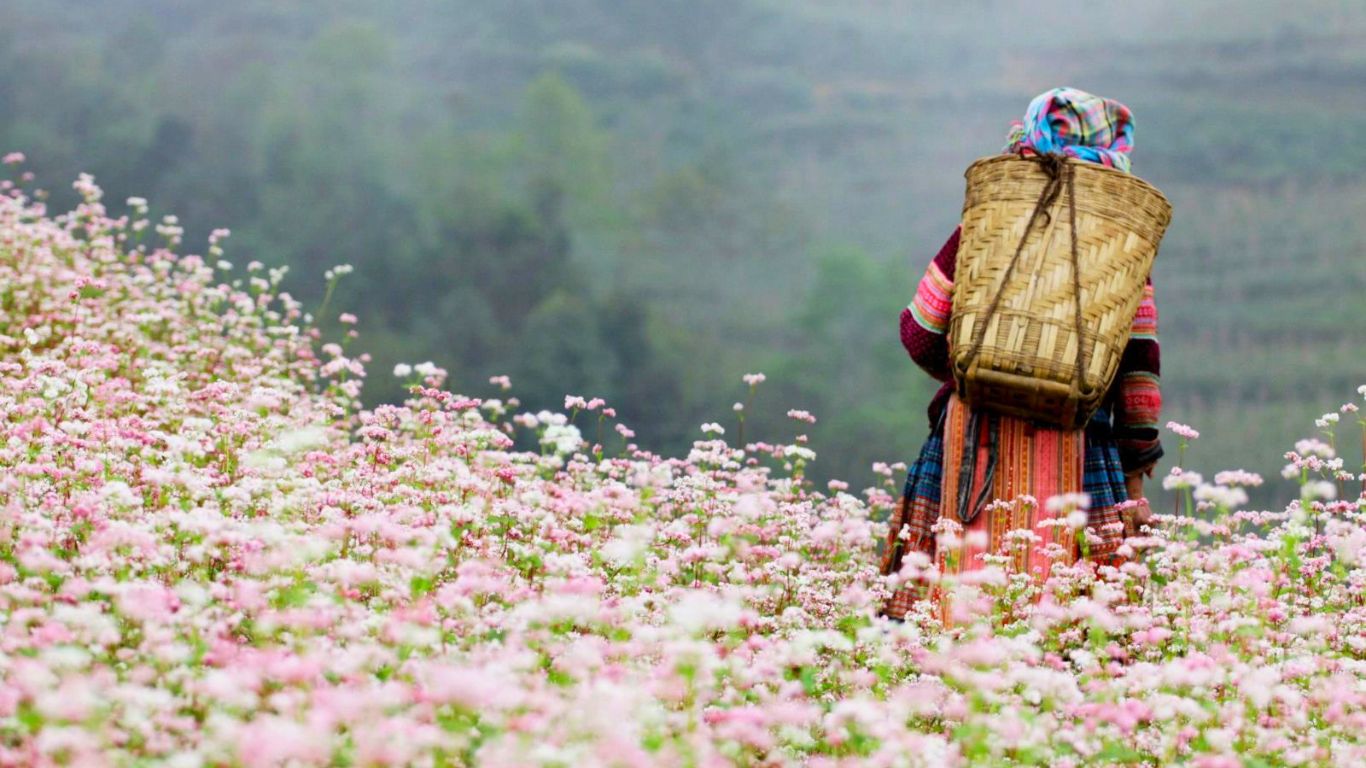
Spring is also a time of cultural festivities in Sapa. Sapa in April sees the arrival of the traditional festivals of the ethnic minority groups, offering a unique opportunity to witness their vibrant customs and traditions.
The season for watering in Sapa is from April to early May. During this time, the terraced rice fields are inundated with water to prepare them for the upcoming sowing. The sight is truly breathtaking as the rice fields turn into huge mirrors that reflect the mountains and sky. If you’re into photography, the perfect time to visit Sapa is after the harvest season.
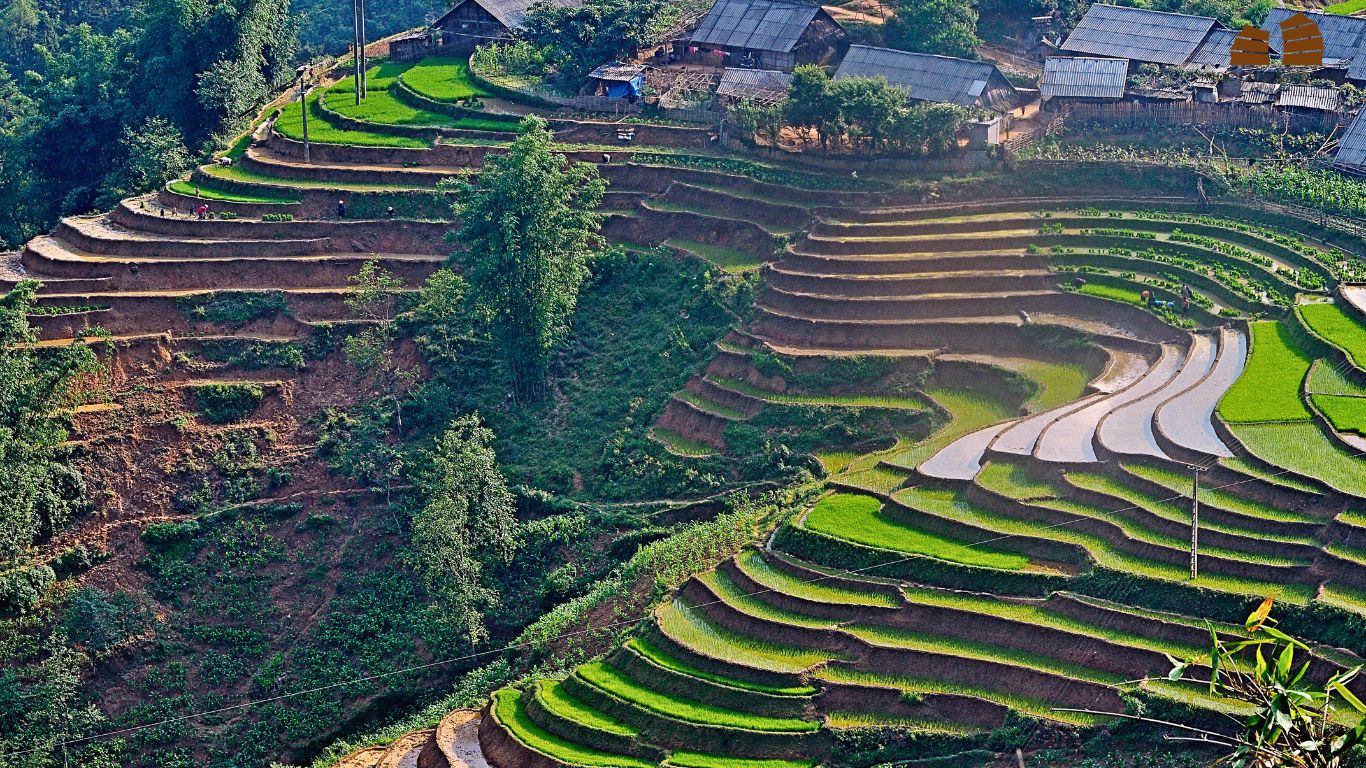
Sapa in Summer: Lush Greenery and Cultural Immersion
During summer (June to August), Sapa transforms into a verdant paradise, with lush greenery carpeting the hillsides. Burning hot weather and scorching sunshine, the ordinary summer features seen in other parts of Vietnam cannot be found there during summer. Despite this advantage, this is also the rainy season in Sapa so you may not have the most comfortable conditions for a walking tour discovering this lovely town.
Sapa in Autumn: Golden Rice Terraces and Ideal Trekking
Autumn in Sapa is a great season for exploration just like spring. The level of rainfall decreases substantially, making the weather much drier and milder. Low level of rain together with stably cool climate makes fall time such the most beautiful time to explore the beauty of Sapa.
During this time, the rice terraces are at their peak harvest season and the entire region is painted with mesmerizing golden hues. From September to November, the terraced fields turn into a tapestry of gold. You can witness the skillful hands of local farmers as they harvest the rice, creating a picture-perfect scene. It is truly a sight to behold and an experience that you will cherish forever.
Note: The weather during November is nice with slightly lower temperature, so Sapa also witnesses a large number of tourists.
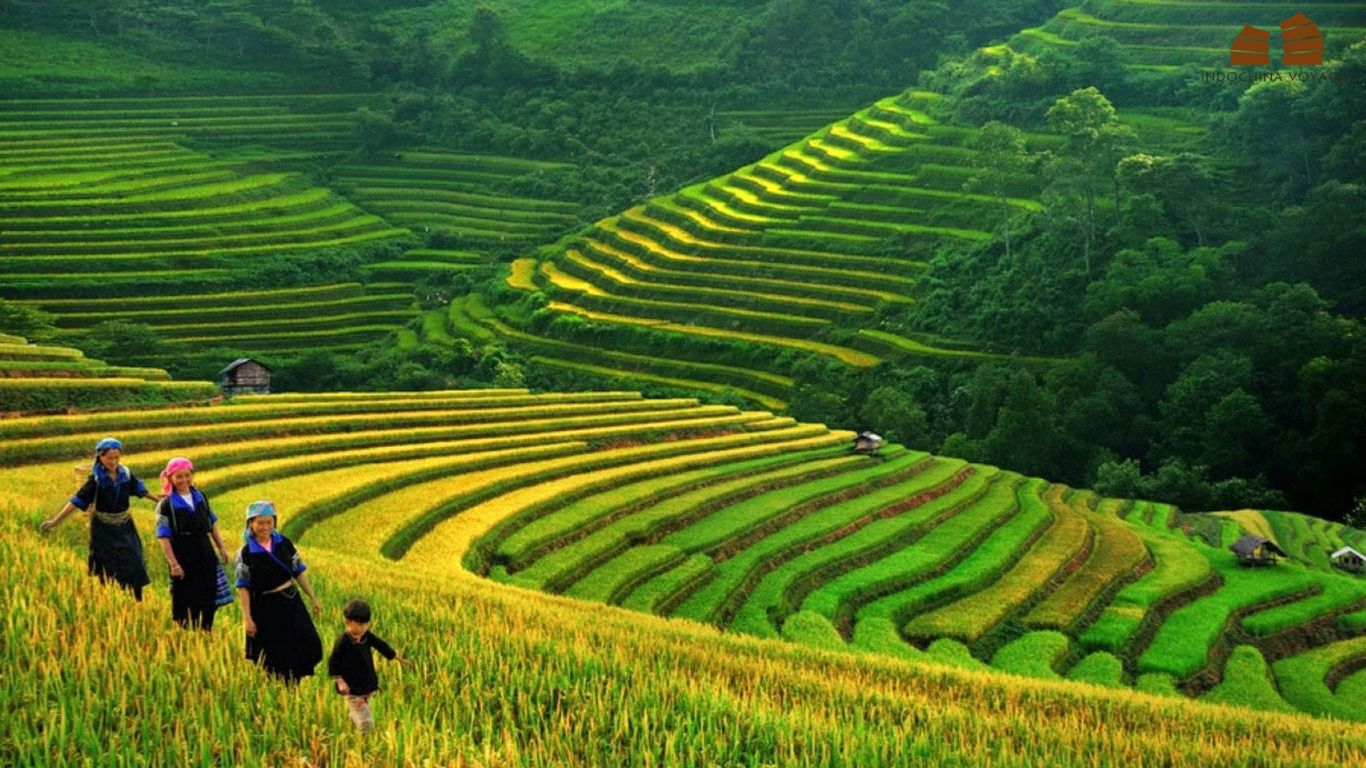
Sapa in Winter: Enchanting Scenery and Fewer Crowds
From December to February is the winter time. Nevertheless, in return, travelers will have a great chance to admire the magnificent sunrise over the valley in the very early morning. In recent years, you can witness snow in Sapa. If having a great opportunity to visit this pictured-postcard town on this occasion, you will certainly watch pretty a romance landscape.
The average temperature of Sapa is rather low at only 15°C. From December to February is winter time in Sapa when the weather can become exceptionally cold, sometimes even making snow fall. This is also a unique characteristic that makes Sapa even more attractive to visitors. With fewer tourists visiting during the winter months, Sapa’s trails offer a tranquil escape into nature.
Sapa Monthy Weather
| Month | Average Temperature | Rainfall | Sunshine hours |
|---|---|---|---|
| January | 8°C – 15°C | Low (e.g., 30mm or 10%) | Moderate (e.g., 5 hours) |
| February | 9°C – 17°C | Low (e.g., 40mm or 15%) | Moderate (e.g., 6 hours) |
| March | 12°C – 20°C | Moderate (e.g., 60mm or 20%) | Mostly Sunny (e.g., 7 hours) |
| April | 15°C – 24°C | Moderate (e.g., 80mm or 25%) | Mostly Sunny (e.g., 8 hours) |
| May | 18°C – 27°C | Moderate (e.g., 100mm or 30%) | Mostly Sunny (e.g., 8 hours) |
| June | 20°C – 29°C | High (e.g., 150mm or 40%) | Occasional Rain Showers (e.g., 6 hours) |
| July | 22°C – 31°C | High (e.g., 200mm or 50%) | Occasional Rain Showers (e.g., 5 hours) |
| August | 22°C – 30°C | High (e.g., 180mm or 45%) | Occasional Rain Showers (e.g., 6 hours) |
| September | 20°C – 28°C | Moderate (e.g., 120mm or 35%) | Mostly Sunny (e.g., 7 hours) |
| October | 18°C – 25°C | Moderate (e.g., 80mm or 25%) | Mostly Sunny (e.g., 7 hours) |
| November | 15°C – 22°C | Low (e.g., 50mm or 20%) | Clear Skies (e.g., 8 hours) |
| December | 12°C – 18°C | Low (e.g., 40mm or 15%) | Occasional Cloud Cover (e.g., 4 hours) |


